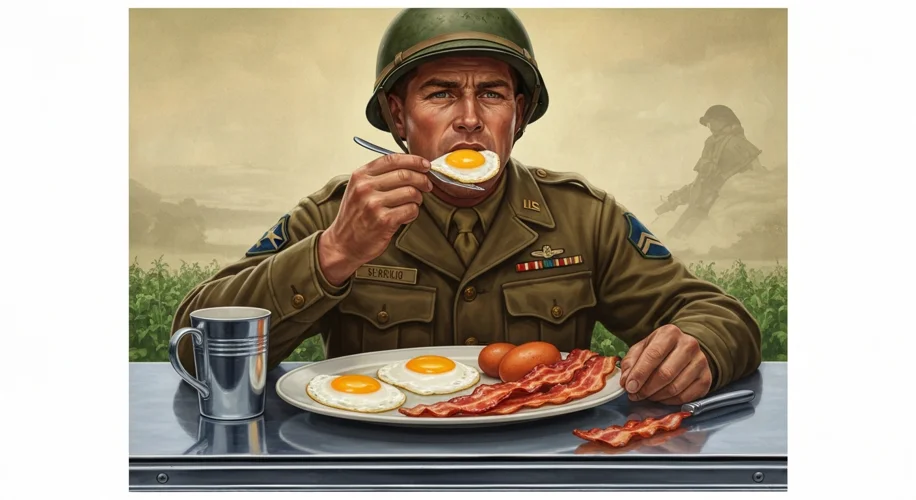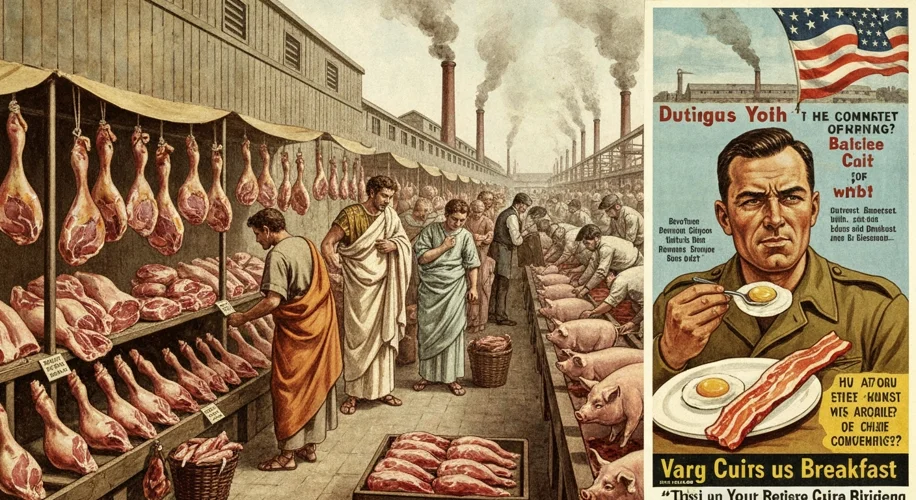The crackle of bacon in a pan, the comforting aroma that heralds breakfast – for many, it’s a quintessential part of a delicious start to the day. But this humble, yet beloved, foodstuff has a history far richer and more complex than its crispy texture might suggest. The journey of pork and its most famous preserved form, bacon, is a tale woven through millennia of human ingenuity, cultural shifts, and the relentless drive to sustain ourselves.
Long before refrigeration, the preservation of meat was a matter of survival. In ancient times, our ancestors faced a stark reality: hunt or starve, and whatever was caught had to last. Pigs, in their untamed, wild boar ancestors, were a readily available and relatively easy-to-manage source of protein. Unlike cattle that required vast grazing lands, pigs could forage effectively, making them ideal for communities across diverse landscapes, from the forests of Europe to the riverbanks of Asia.
The earliest methods of preserving pork were simple, yet remarkably effective. Salting was paramount. Think of the ancient Romans, who were masters of pork preservation. They would generously coat pork cuts in salt, a process that drew out moisture and inhibited bacterial growth. This salted meat could then be stored for extended periods, providing a vital food source during leaner months. Smoking was another crucial technique, adding not only flavor but also contributing to preservation through the antimicrobial properties of the smoke itself.

The cultural significance of pigs and pork is evident across many civilizations. In ancient China, pork was a staple, a symbol of prosperity and a key ingredient in many dishes. The character for ‘home’ (家) in Chinese even features the radical for ‘pig,’ underscoring its central role in domestic life. Similarly, in Europe, pigs were a common sight in villages, often allowed to roam freely, contributing to the local economy and diet. However, some cultures, like Judaism and Islam, developed religious prohibitions against consuming pork, leading to fascinating divergences in dietary practices that persist to this day.
The evolution of bacon as we know it is intrinsically linked to the evolution of curing and smoking techniques. While salt-cured pork belly has been a staple for centuries, the specific development of what we recognize as bacon – typically cured and smoked pork belly, often from leaner, domesticated breeds – accelerated with advancements in animal husbandry and processing. The domestication of the wild boar began thousands of years ago, leading to pigs that were fatter and more amenable to producing the rich, fatty cuts ideal for bacon.
The Industrial Revolution brought about a seismic shift in pork production. As populations in Europe and North America boomed, the demand for affordable protein soared. This led to the rise of more intensive farming methods. Pigs were increasingly raised in confined spaces, bred for rapid growth and specific meat characteristics. This era also saw the development of large-scale processing plants, transforming the way pork was handled, from farm to table.
Cities like Chicago became synonymous with the meatpacking industry. The sheer scale of operations was staggering. Pigs would arrive by the trainload, and within hours, their carcasses would be processed, packed, and shipped across the nation. This industrialization, while making pork and bacon more accessible and affordable, also led to a disconnect between consumers and the origins of their food, and sometimes, to the exploitation of workers in often brutal conditions.

Bacon’s trajectory continued to diversify. In Britain, “back bacon” became the dominant style, a leaner cut from the loin, often with a strip of fat. In America, “streaky bacon,” from the belly, with its distinct fat-to-meat ratio, became the darling of breakfast plates. The advent of refrigeration and improved canning technologies in the late 19th and early 20th centuries further cemented bacon’s place as a readily available and versatile food.
During World War I and II, bacon played a significant role in military rations, valued for its high calorie and fat content, providing much-needed energy for soldiers. The iconic “Uncle Sam wants you” posters, while depicting various foods, often implicitly or explicitly promoted staple items like bacon as part of the patriotic duty to eat well and support the war effort.

Today, the production of pork and bacon is a global industry, employing millions and feeding billions. We’ve seen a resurgence of interest in heritage breeds, artisanal curing methods, and sustainable farming practices, a counter-movement to the industrial scale that often prioritizes efficiency over flavor and animal welfare. Consumers are increasingly seeking out “pasture-raised” or “heritage” bacon, valuing the nuanced flavors and ethical considerations that these methods often entail.
The story of pork and bacon is, in many ways, the story of humanity’s relationship with its food sources. It’s a narrative of adaptation, innovation, and the enduring human desire for sustenance and flavor. From the salt-cured hams of ancient Rome to the perfectly crisped rashers on our modern breakfast tables, the journey of this fatty, salty delight is a testament to our resourcefulness and our unyielding appetite for the savory.

